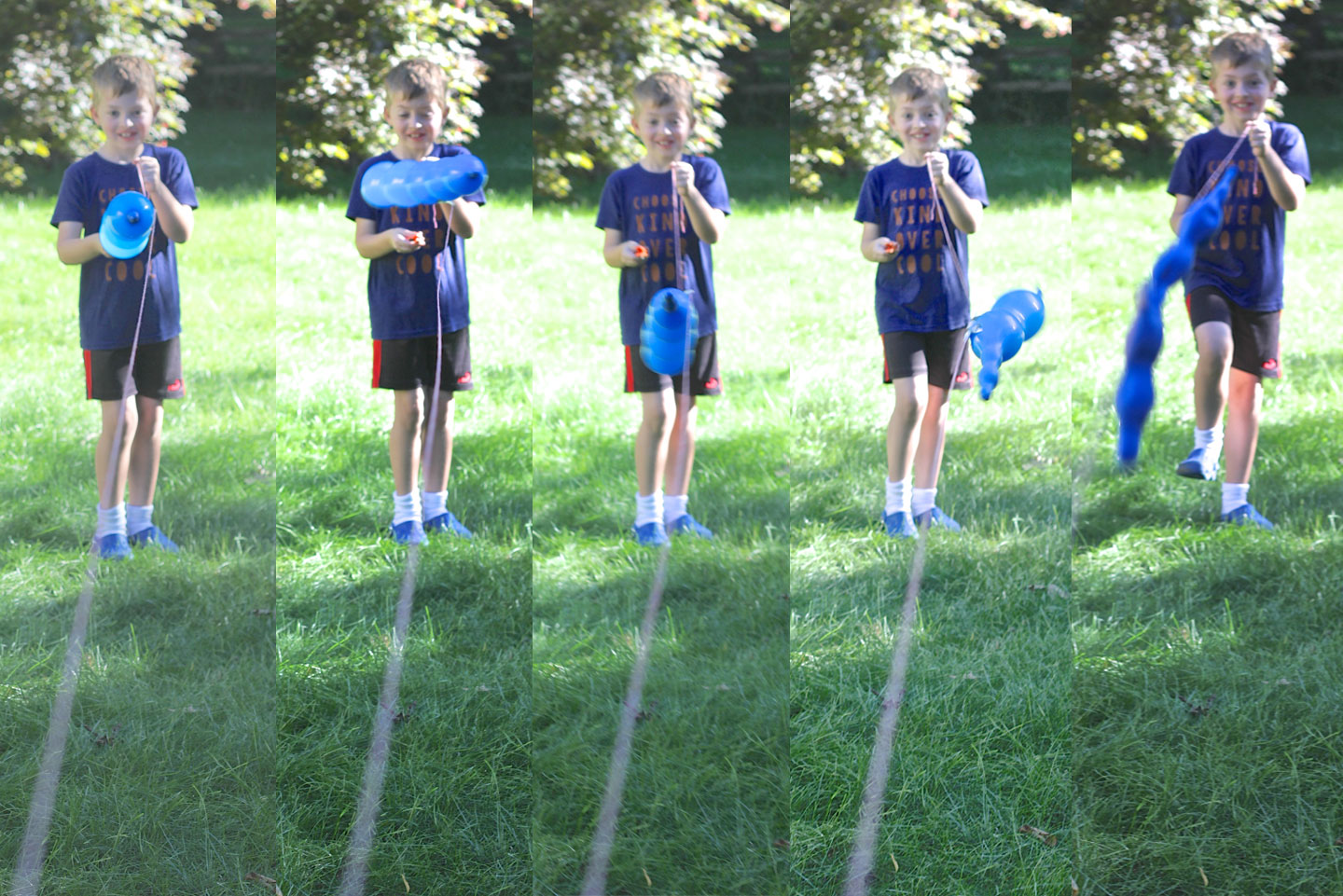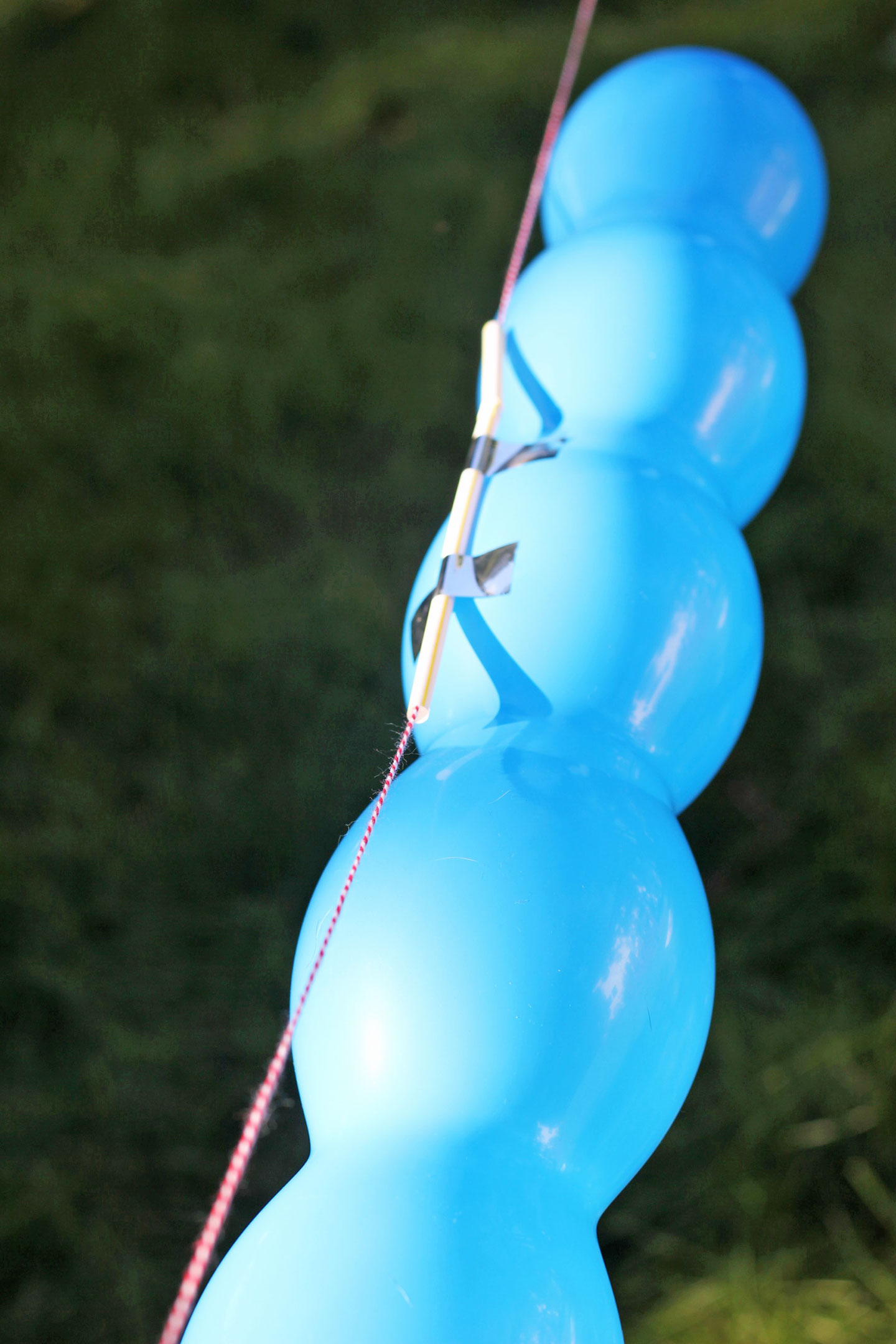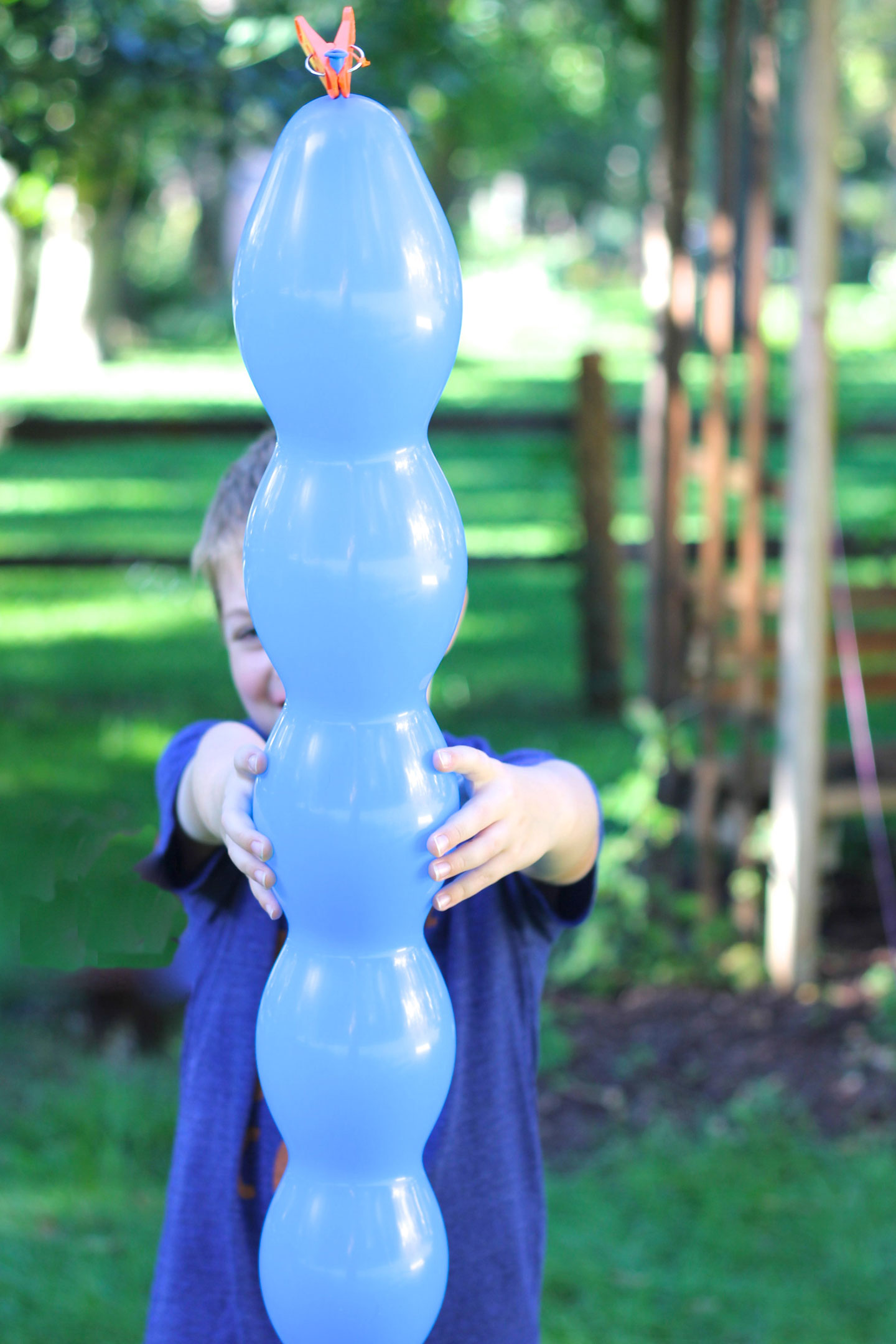Balloon Rocket DIY
Post by MJ of Pars Caeli

Building a rocket can be as simple as blowing up a balloon and letting the air escape. Really, it is rocket science! Balloon rockets are an easy project that can help children understand the basics of rocketry and the laws of motion. From simple party supplies, you can create a balloon vehicle that zooms across a line, propelled by the air that you provide! My children fall in love with learning when we experiment together using simple items, often ones like these that we have around us all the time.

What you’ll need:
- Balloons
- 10-15 feet of string: Any kind of smoother twine or string like baker’s twine or kite string.
- Straws
- Scissors
- Tape
- A post from which to tie the string
- A helper
 Directions:
Directions:
- Begin by tying one end of your string to a post. This project can be done inside or outside as long as you have open space and a solid post. We chose an arbor in our backyard and tied the string at my son’s height.
- Next, with your own air, blow up your balloon. This might be more difficult depending on the shape and size of the balloon. With this squiggle balloon we used a hand pump to help! Be careful not to overfill.
- Once the balloon is full, do not tie the end. Hold the end shut between your forefinger and thumb, making sure that no air leaks out.

- Then attach a straw with tape to the balloon. With the clip on the end closest to you, thread the string through the straw and keep it on the end that is not tied to the post.
- When you’re ready, hold the string taut and release the balloon! What happens next? The balloon will zoom down the line, often twisting and turning around the string as it moves across the twine.

We tried changing the angle of our zip line as well as the size and shape of balloons. Each factor changed the speed and distance our balloon would travel!! Can you guess what made for the fastest rocket?
How does this work? When the air escapes out of the balloon, it creates a forward push called thrust. The force out (air) in one direction causes a force in the opposite direction (balloon moving forward). This experiment is a simple way to explain Newton’s Third Law of Motion: “For every action there is an equal and opposite reaction.”

The thrust happens because the air is forced out of the balloon. In real rockets it’s not the air we breathe in but the burning of fuel that creates and maintains the thrust. Engines can blast downward and the rocket propel upward from a constant supply of fuel.
Become a rocket scientist and explore the laws of motion! It can be as simple as releasing a balloon. Happy learning!
MJ is a graphic and product designer, wife, and proud momma to three. She founded Pars Caeli (meaning a piece of heaven), a delightful blog and shop, to add more creative to the everyday. MJ worked with our team to bring her lunchbox jokes to life in our product Lunchtime LOL Notes, now available at The Land of Nod to bring on a case of the giggles!